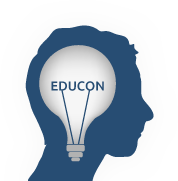Future Visioning as a Tool for Creative Thinking
Conversations about the “future of education” (and nearly every other sector) are prolific. How can we make sure that we aren’t just pontificating, but using future visioning to help ask better questions, unlock creativity, and create better solutions? In this conversation, we’ll explore a few methods to look beyond the constraints of the present to not only imagine, but design for the future.
Filmmakers, CEOs, environmentalists, and designers all use future visioning as a tool for innovation. Why? To understand the potential the future holds, imagine the possibilities, surface what is preferable, and explore how to make a desired future real. With implications far beyond new products or the latest sci-fi flick, future visioning can help you see and forge a path for your own future, the future of your school or organization, or the future of society at large.
Participants in this conversation will learn some simple future visioning activities that can be used with students and colleagues back home, and explore some big questions about the implications of seeing, interpreting, and building the future.
Conversational Practice
Framing (10 minutes): Presenters will provide an introduction to the subject of future visioning including relevant examples in order to provide a shared vocabulary and framework for the rest of the conversation.
Game Circuit (30 minutes): Participants will divide themselves among three stations, at which they will learn about a different future visioning activity. Groups will rotate every ten minutes until everyone has visited every station.
Group Discussion and Documentation (15 minutes): Presenters will facilitate a group discussion by posing guiding questions and keeping a written log on a shared Google Doc (which will also contain descriptions of and resources for each activity from the Game Circuit).
Independent Reflection and Planning (5 minutes): Participants will have a few minutes to copy the shared Google Doc containing descriptions of the activities and notes from the discussion in order to reflect on - and perhaps set an intention to - implement some of what they learned in this conversation when they get home.
-
Michael ReichertSalesianum
-
don buckleyTools-at-Schools,Teachers College Columbia, Pearson Author
-
Marita FitzpatrickBodine High School for International Affairs
-
Charlie HaleFirstHand (University City Science Center)
-
Tim StahmerAssortedStuff.com
-
Jason Falconio
-
Kendra JewerRocky View Schools
-
Kristin Susens
-
Diana PottsScience Leadership Academy Middle School
-
William SutherlandSalesianum School
-
Zachary Robie
-
Michael McCabeCommunity - Learning - Design Corporation, Inc
-
Megan McNamaraPhiladelphia High School for Girls
-
Bryan RosenNightingale-Bamford School
-
Rebecca LeeIDEO
-
Carissa Casey
-
Peggy GeorgeClassroom 2.0 LIVE
-
Rebecca Yacono
-
Adam RosenzweigBeyond 12
-
Caitlin ThompsonInquiry Schools
-
Christian Kunkel
-
Anna MuessigNew Jersey Education Association
-
James MillerMidland University
-
Smith TimothyPawcatuck Middle School
-
Karen HuangEdu-Tech Academic Solutions
-
Heather BeckLake Oswego School District
-
Julie GelsingerSouth Western High School
-
Rachel IrvinOak Ridge Elementary School
-
Jessica RaleighDenver Public Schools
-
Sarah Bower-GriecoSLA-MS
-
Laura CraigThe Crefeld School
-
Haley Robinson
-
Jeffrey McClurkenUniversity of Mary Washington
-
Nicholas FargnoliBloomfield Central School
-
Karina RuizBRIC Architecture, Inc.
-
Colin SamuelThe Brearley School
-
Knikole TaylorLancaster ISD
-
Tiffany WycoffAuthor, Blended Learning in Action; Co-Founder LINC
-
Kevin Brown
-
Katie Terino
-
Joanne Beckwith
 EduCon 2.9
EduCon 2.9
No comments have been posted yet.
Log in to post a comment.